Traveling sustainably on Kauai is pretty easy — this is Hawaii’s “Garden Island,” where time stands relatively still, development takes a back seat, and rainforests, agricultural land, and vast beaches prevail.
Hawaiians once abided by an ahupuaa system to maintain the island’s natural state, a system that placed equal emphasis on ma uka (inland) and ma kai (seaward) and governed how they interacted with all natural resources. While these traditional, sustainable ways of life are no longer actively practiced, there are steps you can take to embrace green initiatives, help protect Kauai’s delicate ecosystem, and ultimately leave a smaller footprint during your trip.
Where to stay
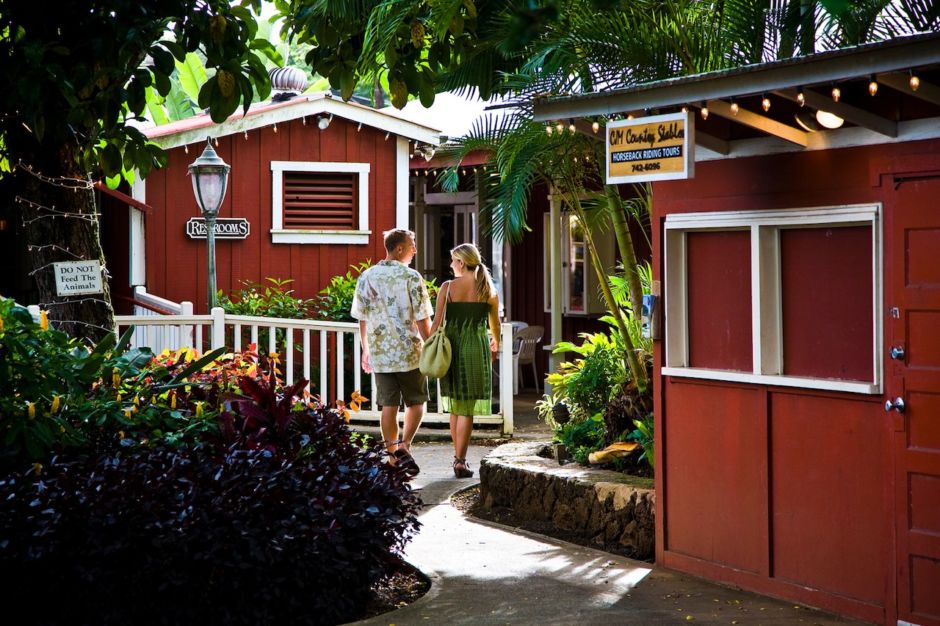
Photo: Hawaii Tourism Authority/Tor Johnson
Mix the pleasures (and minimal footprint) of camping with a bit more in the way of creature comforts at The Cabins at Kokee, 3,000 feet above sea level in Kokee State Park. These small abodes are minimal in amenities but offer easy access to hiking trails and profound early-morning vistas before the sightseers arrive.
In the take-it-easy category, some hotels have adopted Earth-friendly practices, such as the Grand Hyatt Kauai Resort & Spa in Poipu. A giant solar array, gardens that supply food to its restaurants, and recycling facilities are among the environmental initiatives of the Green Business Award-winning resort. A more budget-friendly option is the quirky, locally owned Garden Island Inn — its central location in Lihue lets you walk to nearby restaurants, scope out free Hawaiian music, and hit the beach to swim, kayak, and SUP.
Appreciating island history
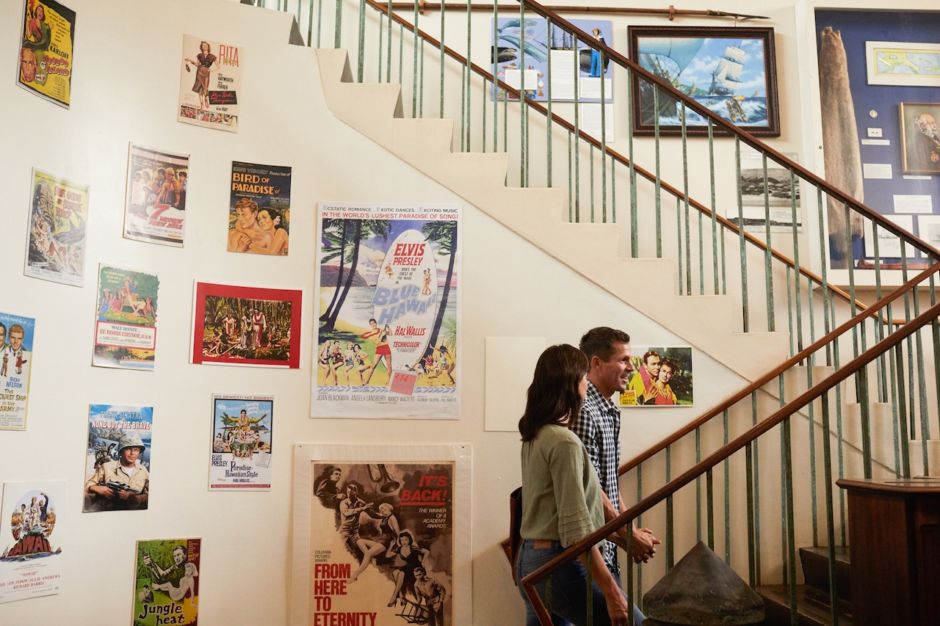
Photo: Hawaii Tourism Authority/Daeja Fallas
Understanding a place and its history is part of being a respectful visitor. Check out the Kauai Musuem in Lihue (four minutes from the airport), and be your own guide through its maze of Hawaiian artifacts. You’ll learn about Kauai’s unique story and see relics excavated from the Haaheo o Hawaii, a royal luxury yacht with a storied past that met its untimely demise in Hanalei Bay. Take time to watch the film that plays on repeat — it covers the history of the islands, including the illegal overthrow of the Hawaiian Kingdom, in an easy-to-understand way.
With more time, head over to the county town of Waimea, from where Hawaiian royalty (including Kaumualii, the island’s last king) once reigned. This is also the site where Captain Cook first landed in the Hawaiian Islands in the late 1770s.
Tasting local
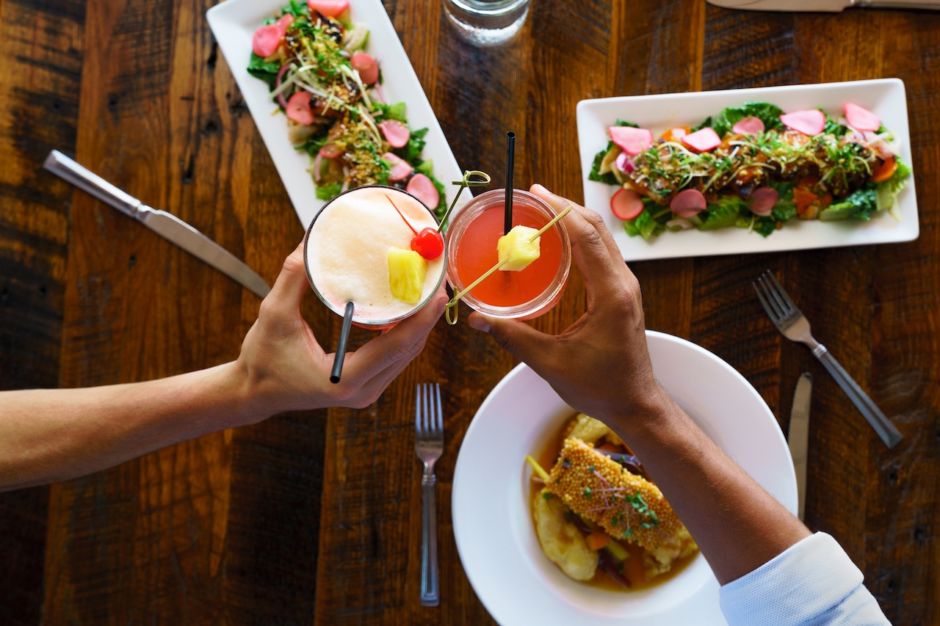
Photo: Hawaii Tourism Authority/Blake Bronstad
Imagine the journey (and fossil-fuel cost) of getting imported goods to the island. Skip that lavish buffet, keep it simple, and keep it local:
- The Kauai Culinary Market in Poipu (Wednesdays) and the Kauai Community Market in Lihue (Saturdays) are two of the best farmers markets around. Nab a sugarloaf white pineapple — a smooth, less citric version of the fruit you know.
- Coffee is only grown commercially in two US states, so take advantage of the rare opportunity to visit Kauai Coffee Company in Kalaheo. Sample the banana-flavored coffee, and join one of the free daily tours to learn about how the beans are grown and harvested.
- At Luau Kalamaku, you’ll taste kalua (baked) pig cooked in an imu (underground oven), poi (cooked and pounded taro root), laulau (steamed meat wrapped in taro leaves), and haupia (coconut pudding), followed by entertainment with Polynesian flair.
- Merriman’s Fish House specializes in ono (wahoo), locally caught fish; Kalalea Juice Hale sells tasty açai bowls that incorporate fresh fruit, including papaya and coconut.
Not exactly a sacrifice to keep it local, is it?
Going green on land

Photo: Hawaii Tourism Authority/Tor Johnson
Before you head out on any hike, think about taking a rescued dog out for the day from the Kauai Humane Society. Grant them the joy of digging in the sand at Kalapaki Bay or soaking in the smells on a hike up Nounou (Sleeping Giant) Mountain. Just make sure that, wherever you go, dogs are allowed and you follow all leash, cleanup, and other regulations.
Waimea Canyon (“The Grand Canyon of the Pacific”) and Kokee State Park have a bunch of exceptional hikes for the adventure-savvy — with emphasis on the exceptional. Mahaulepu Heritage Trail is also a treat because of its life-sized sandcastles and jagged coastline. Plus, there’s a limestone cave to explore (Makauwahi) — it’s the state’s largest fossil site, and scientists have unearthed bones of extinct giant, flightless birds here. Wear sunscreen and a hat and bring water. This coast is toasty.
Going green on the water
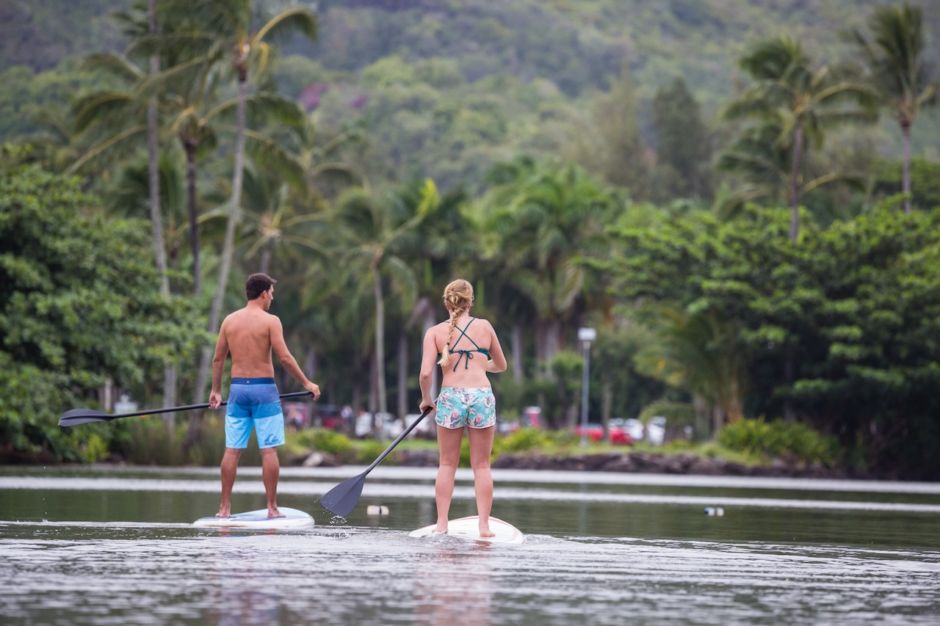
Photo: Hawaii Tourism Authority/Tor Johnson
First things first: If you’re really all about sustainability, help keep the ocean free of trash and attend a beach cleanup. Surfrider Foundation, Kauai Chapter hosts at least one a week. Then head to Poipu or Lydgate, two beaches with nooks where all members of the family can safely swim.
Further inland, rent a kayak or stand-up paddleboard and explore Wailua River — the longest on the island — and pay your respects to the sacred area that once served as the birthplace for alii (Hawaiian royalty).
Gaining a sense of place
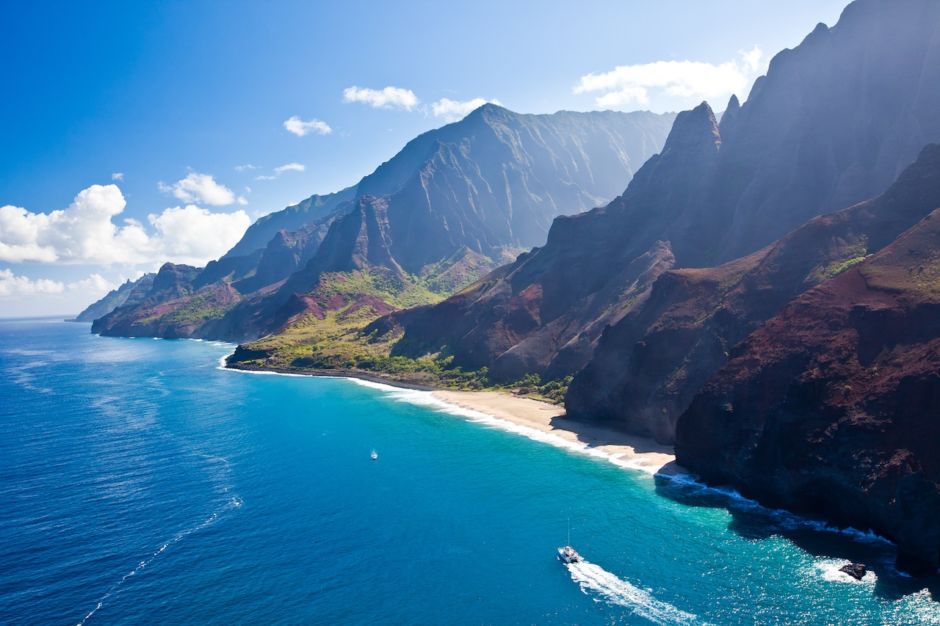
Photo: Hawaii Tourism Authority/Tor Johnson
Nature is the star of the show on Kauai, and ecologically minded tours are the best way to learn about the island’s natural and anthropological history. Check out Fern Grotto with Smith’s Tropical Paradise — you’ll take a two-mile boat ride along the Wailua River to a lava cave dripping in ferns, with Hawaiian entertainment and storytelling along the way.
If you have a hearty pair of sea legs, hop on a boat tour of the Napali Coast. Soak in the unbelievable views of fluted mountains that reach into the sky with companies like Holo Holo Charters or Kauai Sea Tours. Knowledgeable guides will share stories about each of the verdant valleys of this inaccessible region and the Hawaiians who once resided within them.
A more leisurely tour can be found at National Tropical Botanical Garden, an organization dedicated to the conservation of Hawaii’s native plants. Two adjacent gardens (McBryde and Allerton) house enchanting native flora and provide insight into the history and evolution of Hawaii’s plant life.
You can get off your feet, too. Hang out with paniolo (cowboys) and ride horseback through one of the oldest working cattle ranches in the state, set against the north shore’s emerald mountains, at Princeville Ranch. They can also set you up to zipline or kayak.
Supporting local culture
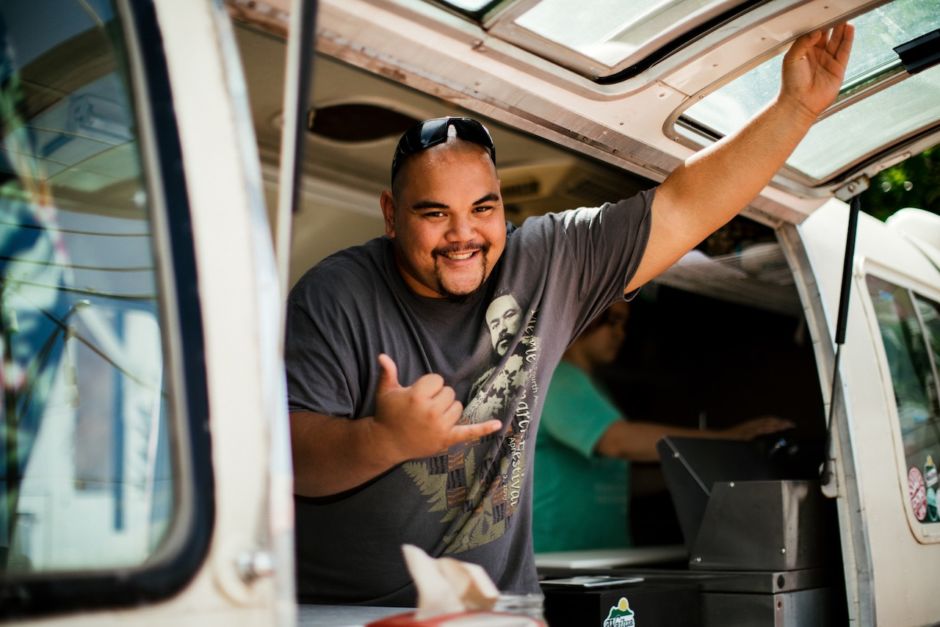
Photo: Hawaii Tourism Authority/Heather Goodman
Kauai may be small, but some of its events are mighty. And supporting the island’s people is just as important as supporting the island itself:
- Koloa Plantation Days happens every summer and celebrates the rich cultural diversity of the island — bon rodeo events, a parade, art and food festivals, free hula, and Hawaiian music performances make it easy to absorb all that Kauai has to offer.
- The best place to stock up on local, one-of-a-kind Kauai products is an art walk. The most popular are Kapaa’s First Saturday Art Walk, every first Saturday of the month, and the Hanapepe Art Night, every Friday. Shops stay open late, art vendors line the streets, and food and entertainment is always a given.
It’s impossible to leave no trace when traveling, but these are some seriously easy ways to respect the natural and cultural beauty of Kauai while making as small an impact as possible. And they’ll ensure your trip is all the more rewarding.

